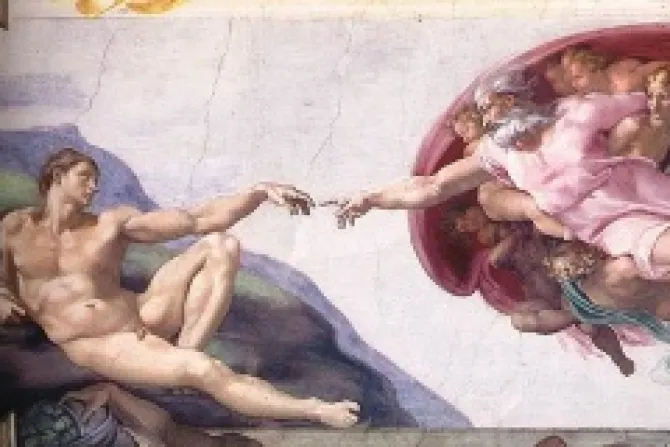Vatican City, Oct 31, 2012 / 12:33 pm
The Sistine Chapel ceiling is celebrating its 500th anniversary today, and Pope Benedict XVI followed in the footsteps of his predecessor Pope Julius II, who unveiled the masterpiece by saying vespers there.
Pope Benedict said in his Oct. 31 address that he was marking the anniversary of this "liturgical classroom" with vespers because "the works of art which decorate it, especially the frescos, find in the liturgy … their living environment."
"It is as if during the liturgical action, the entire symphony of figures comes alive, certainly in the spiritual sense, but also…in the aesthetic sense," the Pope remarked. "The Sistine Chapel, encompassed in prayer, is even more beautiful, more authentic; it reveals all of its treasures."
He also reflected on what it must have been like to see the ceiling when it was first unveiled on Oct. 31, 1512.
The frescoes exude light, but they are also permeated with the idea of the light of God, the Pope observed.
"That light, with its power, conquers the chaos and darkness to give life; in creation and in redemption. The Sistine Chapel tells the story of light, liberation, salvation; it speaks of God's relationship with humanity," he declared.
Vatican Museums Director Antonio Paolucci described the Sistine Chapel as having "a fatal attraction."
"It is an object of desire, that essential point of arrival … for migrants of so-called 'cultural tourism,'" Paolucci said in an Oct. 30 L'Osservatore Romano article.
Despite concerns about damage caused by the presence of some five million visitors per year, he explained that the chapel will remain open to the public.
Dust and humidity from human perspiration can harm the paintings in the long-run, he wrote, but the chapel will remain open to a limitless number of visitors unless it increases "beyond a reasonable level."
In the meantime, measures will be taken to preserve the frescoes, which Michelangelo spent four years painting (1508 to 1512).
"However it is necessary to implement the most advanced technological provisions capable of ensuring the removal of dust and pollution, the fast and effective exchange of air, and temperature and humidity controls," Paolucci said.
No artist has achieved quite the same effect as Michelangelo, who "radically changed" the history of art in Italy in particular, and Europe in general, he wrote.
The likes of his artistic genius will never be seen again, he said, but modern art preservation techniques can keep his illuminating paintings in the Sistine Chapel forever bright.


